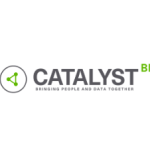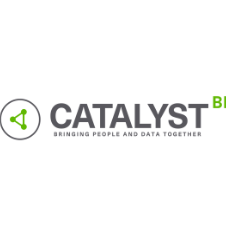How to improve customer retention using predictive analytics according to Catalyst
Customer retention relates to a business’s strategies and activities to keep its current customers. Customer retention analytics can facilitate such activities by providing predictive metrics of customers who are expected to churn.
Read about the importance of customer retention and how Qlik’s easily implementable, predictive analytics solution can solve the problem.
The importance of customer retention
Data-driven customer retention strategies can be very rewarding, often driving profit. Research demonstrates that organisations that make extensive use of customer data analytics for business decision making can see profit improvements of over 100%, versus those that don’t (source: McKinsey & Company).
Despite the intention to utilise AI and analytics being there, only a small percentage of senior leaders actually use customer data consistently to inform business decisions. Customer professionals often lack expertise in or access to data science skills including programming, mathematics and statistics. The inability to translate customer insights into business operations is usually their biggest challenge, with machine learning being amongst one of the least adopted practices.
The benefits of improving customer retention
Retaining your existing customers will enable you to see the following benefits:
1. Retaining your current customers costs less
Attracting a new customer can be five times more expensive than retaining an existing customer. Loyal customers therefore are valuable assets that you should seek to keep. Finding out what makes your current customers stay and why they keep buying from you means that you can take the right steps in keeping the right customers.
2. The opportunity to up or cross sell to current customers
Current customers are much easier to market and sell to. Selling a new product or service to your existing customer base is far less costly than selling them to new customers; customer acquisition activities can be costly.
3. Increasing customer retention rates can enable sustainable growth
Increasing customer retention rates by just 5% can increase profits from anywhere between 25 – 95% (source: Harvard Business Review). Sustainable business growth is much more likely to thrive by retaining your existing customers.
Customer retention analytics
So, we know that retaining your existing customers, rather than attracting new ones, costs less, has the potential to make you more money and can enable sustainable growth. But how can you achieve this, particularly in a competitive marketplace? Customer retention analytics is the answer.
Five methods of retention analytics
The following five methods of retention analytics are commonly used to successfully retain existing customers.
1. Prescriptive analytics: answers specific questions and will determine the best solutions, providing a variety of options. It will make suggestions as to how to take advantage of future opportunities, providing the implications of decisions to aid in improved decision making. Customer retention examples include ‘next best offer’ and ‘next best action’ analysis.
2. Descriptive analysis: provides patterns with customer segments providing insights into historical activities, such as buying patterns and trends. These can be investigated in more detail using clustering, association rules and summary statistics. Utilising this method can be time consuming and the results provided can lack value.
3. Diagnostic analytics: identifies why something happened, including usage trends and churn indicators. Looking to past events, and taking relationships and sequences into account, churn reason analysis and customer health score analysis can be undertaken.
4. Outcome analytics: used for understanding your customers and learning how they use your products and services. It involves monitoring consumption patterns and their related business outcomes.
5. Predictive analytics: uses models to forecast what is likely to happen in particular future scenarios, such as churn risk, renewal risk analysis and next best offer.
How to reduce customer churn using data
You can significantly reduce churn and improve customer retention through utilising your data in the following ways:
1. Formulate and implement a data strategy
To implement a successful data strategy, you should make use of the data you have, understand what the data is telling you and implement organisational change accordingly. Analytics should be viewed as a strategic driver of growth rather than using it in a silo.
Effective steps that you can take include:
- Ensuring that your organisational KPIs are automated, scalable and repeatable
- As a company, collectively define the priority problems that you strive to solve
- Group the problems by ‘data’ and ‘system’ issues, being mindful that issues don’t tend to be with data but with how people use or manage it
- Put tasks in priority order, at the same time as evaluating if your plan is technically feasible
- Review your progress on a three-monthly basis to keep on track
- Ensure behaviour change across your organisation
2. Identify and segment those who are less likely to churn
Customers who are similar to your target customers are less likely to churn. Use the data you have about the features and characteristics of your current customers and create a list of prospective customers, applying algorithms that compare the two. Similar characteristics include:
- Job title
- Industry
- Company size
- Annual spend
Segment your customers based on this information and this will enable you to identify the features of the prospective customers, or high-quality leads, that you should target.
3. Utilise machine learning methods to formulate predictive models
To create a robust customer retention strategy, predictive analytics is a valuable tool that you can use to make predictions about the future. Using historical data, relationships among varied metrics can be analysed to predict what customers like and dislike.
In terms of customer retention, machine learning will quickly and accurately expose the underlying reasons why customers are churning; predictive analytics for churn. It can also identify why customers are loyal to your brand. This is achieved through the analysis of data, statistics and probability to find correlations between variables to assist in optimising crucial outcomes such as customer retention. Such models are applied to new customer data to make informed predictions.
In comparison to human analysis, machine learning algorithms can deliver insights rapidly owing to their processing capabilities. Owing to their iterative nature, the more data they consume, the better they perform. The following examples demonstrate how predictive analytics can be a hugely valuable tool in the retail, financial services and manufacturing industries:
Retail: a retailer can use predictive analytics to identify which up-sell or cross-sell products will be the most relevant based on a customer’s past purchase or browsing history. They can utilise it to establish the optimal attainable prices for each customer and identify the right pricing to increase sales. With real-time machine learning, the impact of competitive pricing on sales, and the adequate frequency of price-based promotions can be found.
Financial services: an insurance company, for example, would benefit from using customer retention analytics to secure targeted insurance plans, speed up claims processing, and offer personalised customer experiences. This all creates a competitive advantage that will attract new customers and retain existing ones.
Manufacturing: those in the manufacturing industry would reap the benefits of predictive analytics in order to analyse the history of demands, providing valuable insight into consumer buying habits, the availability of raw materials, impacts of a trade war, supplier issues, shipping barriers, and other potential disruptions.
4. Utilise segmentation to increase customer retention
Use data analytics to segment your customers and prospects into different groups, identifying how each segment engages with your brand and your products and services. You will be able to draw insights from each subgroup so that you can tailor your communications and strategies accordingly in order to optimise retention of your most valued customers. Awareness of customer value will enable you to make important business decisions.
Customer data that is important to analyse includes:
- Demographics
- Lifestyle
- Products and services purchased by category and customer type
- Frequency of purchase
- Purchase value
This will enable you to establish what types of customers are generating the most revenue.
Effective customer segmentation will enable you to create highly targeted product and service recommendation offers. You can segment by, for example:
- Historical value
- Lifetime value
- Value over the next 12 months
- Average customer value by segment
Utilising the correct segmentation means that you can create highly targeted product and service recommendations for your customers and prospects.
A retailer, for example could offer its customers discounts based on different channels, such as online, mobile app or in-store, with different customers receiving different offers based upon their purchase value. Monitoring the seasonality and time-sensitivity of their promotional codes will enable an understanding of how a demographic responds to their sales communications and take relevant actions accordingly to maximise potential revenue.
Poor data and large data volumes needn’t hold you back
If your data is poor, there are a variety of ways that it can be developed. By improving the way that it is collected and testing what you currently have, you can enhance your data. Good data is a continual process of observation, action and education.
Large data volumes held by many organisations can be challenging but they also provide vast opportunities. Bringing together both structured and unstructured data across silos, and blending this with customer interaction data can provide an opportunity to greatly influence your customer’s experiences in real-time.
For existing Qlik Customers, this process is easy. Get in touch with your account manager today to find out more.



